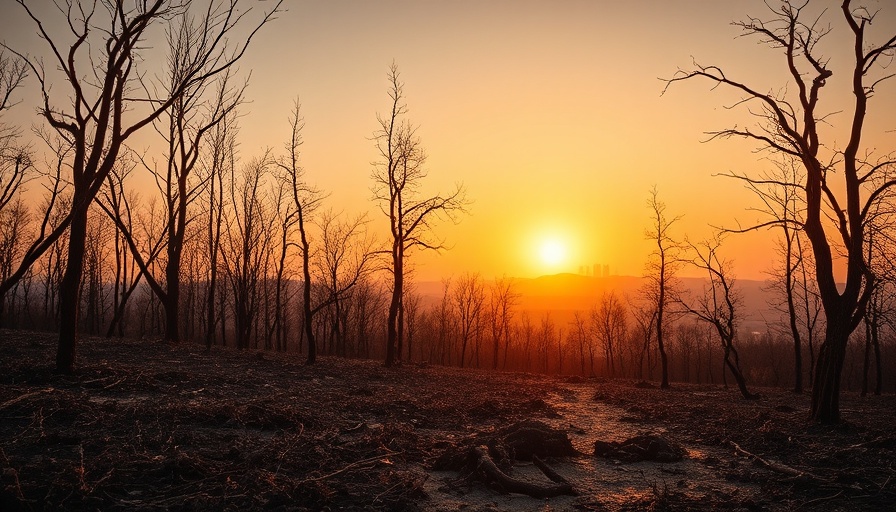
Are Plants Losing Their Carbon Sequestration Ability?
Recent studies reveal alarming trends in our ecosystems. Earth’s plants and soils reached their peak capacity to absorb carbon dioxide in 2008, and the situation has only worsened since. A meticulous analysis conducted by James Curran, a former chief executive of the Scottish Environment Protection Agency, and his son Sam emphasizes that the annual rate at which plants absorb CO2 has been declining by roughly 0.25% each year. This story intertwines our understanding of the climate crisis with the urgent need for biodiversity restoration.
The Tipping Point
Initially, the rise in atmospheric CO2 levels was beneficial. Warmer temperatures facilitated plant growth, leading to extended growing seasons. However, this natural boost has been significantly compromised due to extreme heat, wildfires, drought, flooding, and outbreaks of pestilence. Curran warns that the dire combination of these factors could push our planet beyond recovery. The study notes that the chances of an unchecked climate breakdown have surged since passing this pivotal turning point.
Emissions and Sequestration: A Troubling Contrast
According to Curran's findings published in the journal Weather, in order to stabilize atmospheric CO2, emissions must decrease by 0.3% annually. With current emissions escalating at a rate of 1.2% per year, the prospects of achieving a balance remain bleak. Notably, the study suggests that reducing potential carbon sequestration by one-fifth may translate to an annual increase of atmospheric CO2 by 25 to 37 percent. These figures make it abundantly clear that the challenge to combat climate change is intensifying.
Understanding the Ecosystem's Decline
Much like the global trend, forests in the U.S. are also predicted to sequester considerably less carbon over the coming decades. According to reports from Resources for the Future (RFF), the carbon dioxide stored annually by U.S. lands could drop by 21% through 2062. This stark realization signifies not only a national concern but hints at broader environmental implications. As climate and land-use patterns shift, aging forests—once vibrant in their carbon-sequestering capabilities—now face stagnation, contributing to declining rates.
Biodiversity: A Vital Component of Carbon Sequestration
Our planet's biodiversity plays an essential role in maintaining the balance necessary for effective carbon uptake. Biodiverse ecosystems can respond better to changes and can recover from disturbances more efficiently. In contrast, simple or degraded ecosystems tend to worsen under environmental stress. As a result, rebuilding global biodiversity could act as a crucial buffer against the climate crisis, improving overall ecosystem services, including natural sequestration trends.
The Road Ahead: Restoration and Innovation
As researchers highlight the alarming trends in our climate system, the need for proactive measures to boost carbon sequestration is more crucial than ever. Governments and organizations are being urged to invest in afforestation initiatives and innovative carbon capture technologies. These measures, particularly when paired with habitat restoration efforts, could serve as formidable solutions in our battle against climate change.
Conclusion: Why Understanding This Matters
The information gathered from the studies illuminates the intricate relationship between climate changes and natural systems. A solid grasp of these dynamics empowers us to make informed choices—whether it’s advocating for environmental policies supporting biodiversity restoration or fostering awareness about emissions.
As individuals and communities, our actions contribute to or counteract climate change—and the time for action is now. Through collective efforts, we can help pave the way toward a more sustainable and habitable future.
 Add Row
Add Row  Add
Add 




Write A Comment